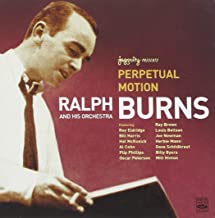
Daily Dose Of Jazz…
Ralph Jose P. Burns was born on June 29, 1922 in Newton, Massachusetts and began playing the piano as a child. Attending the New England Conservatory of Music, he learned the most about jazz by transcribing the works of Count Basie, Benny Goodman and Duke Ellington. While a student, he lived in the home of Frances Wayne, who was an established big band singer and her brother Nick Jerret was a bandleader who began working with him. He found himself in the company of performers as Nat King Cole and Art Tatum.
Moving to New York in the early 1940s, he met Charlie Barnet and the two men began working together. In 1944, he joined the Woody Herman band with members Neal Hefti, Bill Harris, Flip Phillips, Chubby Jackson and Dave Tough. Together, the group developed Herman’s sound. For 15 years, Burns wrote or arranged many of the band’s major hits including Bijou, Northwest Passage, Apple Honey, and on the longer work Lady McGowan’s Dream and the three-part Summer Sequence.
Herman band member Stan Getz was featured as a tenor saxophone soloist on Early Autumn, a hit for the band and the launching platform for Getz’s solo career. Burns also worked in a small band with soloists including Bill Harris and Charlie Ventura. The success of the Herman band provided Ralph the ability to record under his own name. He collaborated with Billy Strayhorn, Lee Konitz and Ben Webster to create both jazz and classical recordings.
Writing compositions for Tony Bennett and Johnny Mathis led to his later work with Aretha Franklin and Natalie Cole. He was responsible for the arrangement and introduction of a string orchestra on two of Ray Charles’s biggest hits, Come Rain or Come Shine and Georgia on My Mind. In the 1990s, Burns arranged music for Mel Tormé, John Pizzarelli, Michael Feinstein and Tony Bennett.
During the 1960s he quit touring as a band pianist and began arranging and orchestrating for Broadway shows including Chicago, Funny Girl, No, No, Nanette, and Sweet Charity. His first film score was for Woody Allen’s Bananas. He worked with Bob Fosse and won an Academy Award for Cabaret, and went on to compose the film scores for Lenny, New York, New York and All That Jazz, the latter garnered an Academy Award. Besides winning Oscars, Burns won an Emmy, a Tony and a Drama Desk Award. From 1996 until his death, he restored many orchestrations for New York City Center’s Encores! series.
Carefully hiding his homosexuality throughout his life, pianist, composer and arranger Ralph Burns, who was posthumously inducted into the New England Jazz Hall of Fame in 2004, passed away on November 21, 2001 from complications of a stroke and pneumonia in Los Angeles, California.
More Posts: arranger,composer,history,instrumental,jazz,music,piano
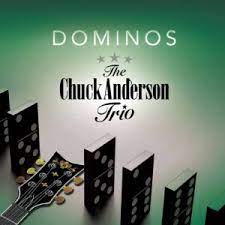
Daily Dose Of Jazz…
Chuck Anderson was born in Chicago, Illinois on June 21, 1947. He began guitar lessons at the age of 14 and by 1963, he was teaching guitar and playing in a band.
At the age of 19, he began studies with Dennis Sandole, who was notable for his association with John Coltrane, James Moody, Michael Brecker, Pat Martino and Jim Hall.
In 1969, Anderson was offered the staff guitar job at the Latin Casino in Cherry Hill, New Jersey. The Latin was a popular venue before gambling came to Atlantic City. During that period, he accompanied and performed with Bobby Darin, Billy Eckstine, and Peggy Lee, playing fourteen shows a week.
By 1973 Chuck had returned to jazz and formed the Chuck Anderson Trio with Al Stauffer on bass and Ray Deeley on drums. Four years later, he was the staff guitar job at Valley Forge Music Fair in Devon, Pennsylvania.
During the years leading up to the Eighties he worked with Nancy Wilson, Michel LeGrand, and Anthony Newley. In the years that followed, he concentrated on teaching, composing, and session work.
He has written a column, The Art and Science of Jazz, for the web magazine All About Jazz. Guitarist, educator, composer, and author Chuck Anderson continues his career in music.
More Posts: author,composer,educator,guitar,history,instrumental,jazz,music
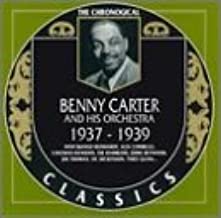
Daily Dose Of Jazz…
Albert King was born on June 19, 1912 in Panama and raised in Kingston, Jamaica where he attended Alpha Boys School. During the 1930s he led his own band, Bertie King and his Rhythm Aces, one of Jamaica’s foremost dance orchestras.
Leaving the island in 1936, he sailed to England on the same ship as his friend Jiver Hutchinson. Once in London he joined Ken Snakehips Johnson’s West Indian Dance Band, then played with Leslie Hutchinson’s band. He also worked with visiting American musicians including Benny Carter, George Shearing and Coleman Hawkins.
In 1937, while in the Netherlands he recorded four sides in the Netherlands with Benny Carter, and the next year he recorded with Django Reinhardt in Paris, France. In 1939 he joined the Royal Navy. He left the Navy in 1943 and formed his own band, also working and recording with Nat Gonella.
Returning to Jamaica in 1951, he assembled his own band, the Casa Blanca Orchestra, playing in the mento style. With no Jamaican record labels at this time, he arranged for his recordings to be pressed in a plant in Lewisham, England, owned by Decca Records. Bertie returned a number of times to the United Kingdom, working and recording with Kenny Baker, George Chisholm, Chris Barber, Kenny Graham and Humphrey Lyttelton. During this period in his career he toured Asia and Africa with his own band and played and recorded in London with some of the leading Trinidadian calypsonians.
King went on to lead the Jamaica Broadcasting Corporation house band in the 1950s. His sidemen included Ernest Ranglin and Tommy Mowatt. He recorded extensively with this outfit, until 1965 when he moved to the USA. His last known public performance was in New York City in 1967. Clarinetist and saxophonist Bertie King passed away in 1981.
More Posts: bandleader,clarinet,history,instrumental,jazz,music
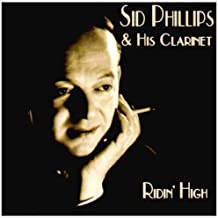
Daily Dose Of Jazz
Sid Phillips was born Isador Simon Phillips on June 14, 1907 in London, England into a Jewish family. He learned violin and piano as a child, and played reeds in his teens as a member of his brother’s European band. He got his start in the music business as a publisher and director for Edison Bell.
In 1930, Phillips began writing arrangements for Bert Ambrose, and joined Ambrose’s ensemble in 1933, remaining there until 1937. Towards the end of the decade he was playing in the United States on radio and freelancing in clubs.
During World War II, Sid served in the Royal Air Force, then put together his own quartet in 1946 and wrote several pieces for the BBC Symphony Orchestra. He led a Dixieland jazz band of his own formation from 1949, and his sidemen variously included George Shearing, Colin Bailey, Tommy Whittle, and Kenny Ball.
Phillips’s first recordings under his own name were made in 1928. In 1937 through 1938, a number of his recordings were issued in the United States, through a contract he signed with Irving Mills and issued on Mills’ Variety label, as well as Vocalion, Brunswick and Columbia labels, though most of his recordings were made in England.
Clarinetist, arranger and bandleader Sid Phillips, who continued to record as a leader well into the 1970s, passed away on May 23, 1973 at aged 65 in Chertsey, Surrey, England.
More Posts: arranger,bandleader,clarinet,history,instrumental,jazz,music
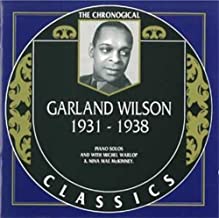
Daily Dose Of Jazz…
Born Garland Lorenzo Wilson on June 13, 1909 in Martinsburg, West Virginia. He attended Howard University in Washington, D.C. and in the 1930s worked in New York City nightclubs.
In 1932 the pianist joined Nina Mae McKinney on a European tour, worked extensively in England with local groups, and recorded with trumpeter Nat Gonella.
In the liner notes of the CD box l’intégrale Django Reinhardt ~ Vol 2 he is quoted as being accompanist of French singer Jean Sablon together with guitarist Django Reinhardt on two sides recorded on November 1, 1935 in Paris, France.
Returning to the United States in 1939, he remained there until 1951, when he moved to Paris, France. Pianist Garland Wilson remained in Paris until he passed away on May 31, 1954.
More Posts: bandleader,history,instrumental,jazz,music,piano


